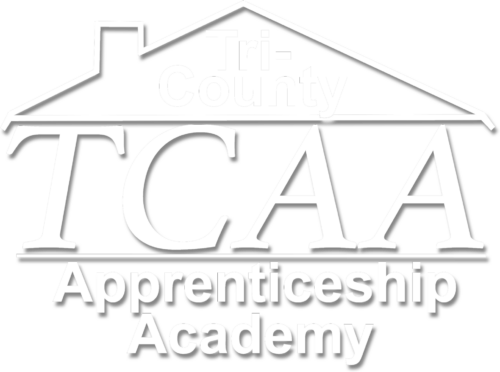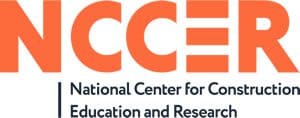HVAC Apprenticeship
HVAC Technician Snapshot
HVAC Technicians Often Do the Following:
- HVAC Technician is a maintenance professional responsible for repairing HVAC and other air quality systems for various businesses or homes.
- Responsible for keeping this equipment clean, fixed and maintained for customers.
- HVAC Technicians work to locate any dangerous features on an HVAC system that could be harmful to the users’ health.
- HVAC Technicians regularly clean, adjust and repair these systems, along with any warranty maintenance.
- HVAC Service Technicians are responsible for responding to emergency calls promptly and providing routine maintenance to help fix the HVAC system quickly for customers.
- HVAC Technicians are responsible for logging maintenances and repairs for their employers records.
- Installing new HVAC equipment
- Running pipe and duct systems through homes
- Reading and interpreting wiring diagrams
- Understanding refrigeration cycles
- Knowing how to interpret various technical data, such as pressure and temperature.
TCAA’S CURRICULUM is Nationally Accredited with the National Center for Construction Education and Research (NCCER)
Pre-Requirement for HVAC Apprenticeship is that all apprentices are required to pass and complete our NCCER Core Curriculum
HVAC Apprenticeship Year 1
Introduction to HVAC:
- Covers the basic principles of heating, ventilating, and air conditioning, and career opportunities in HVAC. Basic safety principles, as well as trade licensure and EPA guidelines.
Trade Mathematics:
- Explains how to solve HVACR trade-related problems involving the measurement of lines, area, volume, weights, angles, pressure, vacuum, and temperature.
Basic Electricity:
- Introduces the concept of power generation and distribution, common electrical safety as it relates to the HVAC field.
Introduction to Heating:
- Covers the fundamentals of heating systems and the combustion process.
Introduction to Cooling:
- Explains the fundamental operating concepts of the refrigeration cycle and identifies both primary and secondary components found in typical HVACR systems.
Introduction to Air Distribution Systems:
- Describes the factors related to air movement and its measurement in common air distribution systems.
Basic Copper and Plastic Piping Practices:
- Explains how to identify types of copper tubing and fittings used in the HVACR industry and how they are mechanically joined.
Soldering and Brazing:
- Introduces the equipment, techniques, and materials used to safely join copper tubing through both soldering and brazing.
Basic Carbon Steel Piping Practices:
- Explains how to identify various carbon steel piping materials and fittings. The joining and installation of threaded and grooved carbon steel piping systems are covered, with detailed coverage of threading and grooving techniques.
HVAC Apprenticeship Year 2
Alternating Current:
- Presents the basic concepts of alternating current generation and use.
Compressors:
- Presents refrigerant compressors. Compressors can take many forms, but they all perform the same basic function.
Refrigerants and Oils:
- Discusses the refrigerants and oils used in modern refrigeration and air conditioning systems.
Leak Detection, Evacuation, Recovery, and Charging:
- Provides trainees with guidance related to servicing the refrigerant circuit of HV AC systems.
Metering Devices:
- Introduces metering devices used in the mechanical refrigeration cycle.
Heat Pumps:
- Introduces heat pumps, a very efficient form, of electric heat.
Basic Maintenance:
- Is an introduction to common tasks associated with the basic maintenance of HVACR systems.
Chimneys, Vents, and Flues:
- Covers the chimneys, vents, and flues that are wised with fuel-burning furnaces and boilers.
Sheet Metal Duct Systems:
- Covers sheet metal duct systems. Major advantages of sheet metal duct systems include low resistance to airflow, strength, and durability.
Fiberglass and Fabric Duct Systems:
- Reviews the application and methods of fabricating fiberglass duct systems. The installation guidelines for fiberglass systems and methods to repair damaged components.
Commercial Airside Systems:
- Introduces the air distribution systems used in commercial structures such as schools and office buildings that are divided into comfort heating and cooling zones.
Air Quality Equipment:
- Introduces the factors related to indoor air quality and human comfort.
HVAC Apprenticeship Year 3
Fasteners, Hardware, and Wiring Terminations:
- Provides trainees with guidance related to working with a variety of fasteners, hardware, and wiring terminations used in HVAC systems.
Control Circuit and Motor Troubleshooting:
- Provides apprentice with information and skills needed to troubleshoot control circuits and electric motors found in heating and cooling equipment.
Troubleshooting Cooling:
- Reviews the configuration and operation of cooling systems.
Troubleshooting Heat Pumps:
- Provides apprentice with guidance related to troubleshooting heat pump systems.
Troubleshooting Gas Heating:
- Reviews the operation of gas-fired furnaces and boilers, and explains the procedures involved in determining the cause of malfunctions.
Troubleshooting Oil Heating:
- Describes the construction and operation of oil-fired heating systems and their components.
Troubleshooting Accessories:
- Provides apprentices with information and skills needed to troubleshoot various air treatment accessories used with heating and cooling equipment.
Zoning, Ductless, and Variable-Refrigerant Flow Systems:
- Provides apprentice with the information and skills needed to troubleshoot and repair zoned, ductless, and variable refrigerant flow systems.
Commercial Hydronic Systems:
- Reviews some basic properties of water and describes how water pressure is related to the movement of water through piping systems.
Steam Systems:
- Focuses on the use of steam for storing and moving energy in HVAC systems.
Retail Refrigerant Systems:
- Provides apprentices with guidance related to retail refrigeration systems.
HVAC Apprenticeship Year 4
Water Treatment:
- Provides Focuses on the methods and devices that are used to treat water in HVAC systems.
Indoor Air Quality:
- Provides apprentices with guidance on how to maintain good indoor air quality and comply with established IAQ and comply with established IAQ standards.
Energy Conservation Equipment:
- Describes energy conservation technologies and devices used in residential and commercial HVAC systems.
Building Management Systems:
- Provides trainees with guidance related to building managed systems.
System Air Balancing:
- Provides trainees with information and skills needed to balance air systems.
System Startup and Shutdown:
- Provides trainees with information and skills needed to start up and shut down commercial HVAC equipment.
Construction Drawings and Specifications:
- Focuses on the interpretation of construction drawings and specifications associated with HVAC installations in new construction.
Heating and Cooling System Design:
- Focuses on the selection of proper heating and cooling equipment along with proper design of air distribution and refrigerant piping systems.
Commercial/Industrial Refrigeration:
- Describes commercial and industrial applications of refrigeration.
Alternative and Specialized Heating and Cooling Systems:
- Provides trainees with guidance related to alternative and specialized heating and cooling systems.
“I would describe TCAA as a great opportunity for young adults who are thinking about coming into a trade. Not only does TCAA provide their apprentices with a great education but you as an apprentice get the full hands-on experience in the classroom all while being able to work full time.” Julian Velazquez – Class of 2023 – B & I Contractors
GET STARTED NOW!
We are here to help you begin your career in the HVAC field.
Wish to join TCAA?
Have Questions?
Contact:
Jill Hagen: JHagen@tcaafl.com
Christine Sardina: CSardina@tcaafl.com

